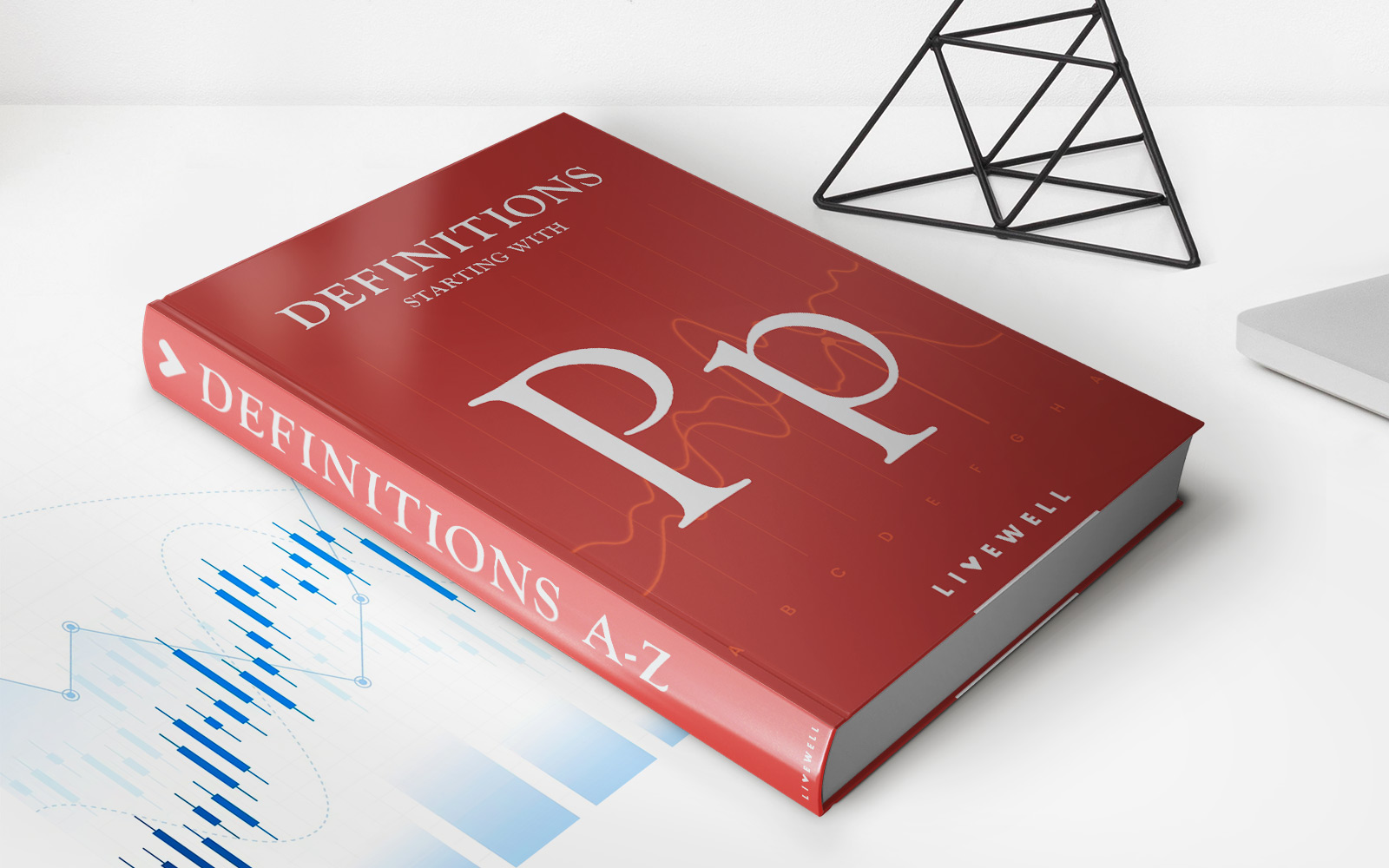

Finance
What Is Single Premium Life Insurance?
Published: October 15, 2023
Discover what single premium life insurance is and how it can help you protect your loved ones financially. Learn more about this finance option today!
(Many of the links in this article redirect to a specific reviewed product. Your purchase of these products through affiliate links helps to generate commission for LiveWell, at no extra cost. Learn more)
Table of Contents
- Introduction
- Definition of Single Premium Life Insurance
- Features of Single Premium Life Insurance
- Benefits of Single Premium Life Insurance
- Drawbacks of Single Premium Life Insurance
- Comparison with Regular Premium Life Insurance
- Who Should Consider Single Premium Life Insurance
- Factors to Consider before Purchasing Single Premium Life Insurance
- Conclusion
Introduction
Life insurance is a crucial component of financial planning. It provides financial protection and security for your loved ones in the event of your untimely demise. There are various types of life insurance policies available, each designed to cater to different needs and preferences.
One such type of life insurance is single premium life insurance. Unlike traditional life insurance policies that require regular premium payments over a specified period, single premium life insurance involves paying a lump sum upfront. This means that you only need to make a single payment at the beginning of the policy, and your coverage is secured for the entire duration.
This article will provide a comprehensive overview of single premium life insurance, including its definition, features, benefits, drawbacks, and a comparison with regular premium life insurance. We will also discuss who should consider this type of life insurance and the factors to consider before purchasing it.
Whether you are a young professional building your financial portfolio or a retiree looking to pass on a legacy, understanding the ins and outs of single premium life insurance can help you make an informed decision about your life insurance needs.
Definition of Single Premium Life Insurance
Single premium life insurance, also known as a paid-up policy or a single premium whole life insurance, is a type of life insurance policy that requires the insured to make a lump sum payment upfront in exchange for a guaranteed death benefit.
Unlike traditional life insurance policies, which involve regular premium payments over an extended period, single premium life insurance provides coverage for the insured’s entire lifetime with just one large payment. This payment is typically higher than the total premiums that would be paid over the same period in a regular premium policy.
The single premium payment is usually determined based on the insured’s age, health, gender, and desired level of coverage. It is important to note that the lump sum payment is non-refundable, and the policy is considered paid-up immediately after the payment is made.
Single premium life insurance falls under the category of permanent life insurance, as it offers lifelong coverage. This means that as long as the policy remains in force, the death benefit will be paid out to the beneficiaries upon the insured’s passing, regardless of when that may occur.
In addition to the death benefit, single premium life insurance policies may also accrue cash value over time. The cash value represents a portion of the premium payment that is set aside and invested by the insurance company. The policyholder may have the option to borrow against the cash value or surrender the policy for its current cash value, if needed.
It is important to note that single premium life insurance is not to be confused with single premium term insurance. While single premium term insurance also involves a one-time payment, it provides coverage for a specific term, such as 5, 10 or 20 years, rather than for the insured’s entire lifetime.
Now that we have a clear understanding of what single premium life insurance is, let us explore its various features and benefits in the next sections.
Features of Single Premium Life Insurance
Single premium life insurance comes with several distinctive features that set it apart from other types of life insurance policies:
- One-time payment: The most prominent feature of single premium life insurance is the requirement to make a lump sum payment upfront. This eliminates the need for ongoing premium payments, providing convenience and financial certainty.
- Lifetime coverage: With single premium life insurance, coverage remains in effect for the insured’s entire lifetime, as long as the policy remains active. This means that beneficiaries are guaranteed a death benefit upon the insured’s passing, regardless of when that occurs.
- Tax advantages: Single premium life insurance may offer tax advantages. The cash value of the policy accumulates on a tax-deferred basis, meaning that no taxes are owed on the growth until withdrawals or surrenders are made. Additionally, the death benefit is typically received by beneficiaries tax-free.
- Flexible death benefit: Policyholders have the flexibility to choose the death benefit amount based on their financial goals and needs. The death benefit can be used to provide financial support for loved ones, pay off debts, cover funeral expenses, or leave a legacy.
- Cash value growth: Single premium life insurance policies often come with a cash value component. The cash value grows over time based on the insurance company’s investments and credited interest. Policyholders may have the option to borrow against the cash value or surrender the policy for its cash value.
- Protection against market fluctuations: Single premium life insurance provides protection against market volatility. Regardless of how the financial markets perform, the policy’s death benefit remains fixed, ensuring that beneficiaries receive the guaranteed payout.
These features make single premium life insurance an attractive option for those seeking lifelong coverage, simplicity in premium payments, and potential tax advantages. However, it is important to consider both the benefits and drawbacks of this type of policy before making a decision.
Benefits of Single Premium Life Insurance
Single premium life insurance offers several benefits that make it a compelling option for certain individuals. Here are some of the advantages associated with this type of policy:
- Immediate coverage: With a single premium payment, the policyholder immediately obtains coverage for their entire lifetime. This ensures that loved ones are financially protected in the event of the insured’s passing.
- Convenience: Single premium life insurance eliminates the need for ongoing premium payments, which can be advantageous for individuals who prefer a one-time payment. This convenience allows policyholders to have peace of mind without the hassle of monthly or annual payments.
- Potential tax advantages: Single premium life insurance policies may offer tax advantages. The cash value growth is tax-deferred, meaning that policyholders do not owe taxes on the accumulated wealth until withdrawals or surrenders are made. Additionally, the death benefit is typically received by beneficiaries tax-free.
- Asset protection: Single premium life insurance policies can provide a level of asset protection since the cash value within the policy is generally shielded from creditors in many states. This can be particularly beneficial for individuals who want to preserve their wealth for future generations.
- Estate planning: Single premium life insurance can serve as a valuable estate planning tool. The death benefit can be used to pay estate taxes, ensuring that heirs receive their inheritance without the burden of hefty tax liabilities.
- Potential for cash value accumulation: In addition to the death benefit, single premium life insurance also has the potential for cash value accumulation. The cash value can be accessed through policy loans or surrendering the policy, providing a source of liquidity for unexpected expenses or financial opportunities.
These benefits make single premium life insurance an attractive choice for individuals who value simplicity, immediate coverage, potential tax advantages, and asset protection. However, it is important to carefully evaluate the drawbacks associated with this type of policy before making a decision.
Drawbacks of Single Premium Life Insurance
While single premium life insurance offers several advantages, it also has some drawbacks that need to be considered before committing to this type of policy:
- High upfront cost: The biggest drawback of single premium life insurance is the large lump sum payment required at the beginning of the policy. This significant upfront cost can be a barrier for individuals who do not have a substantial amount of funds readily available.
- Limited liquidity: By making a single premium payment, policyholders tie up a significant amount of their assets in the policy. This lack of liquidity can restrict access to the funds, especially in the case of unforeseen financial emergencies.
- No opportunity to change coverage: Once the single premium payment is made, the policy’s coverage is set and cannot be adjusted in the future. This lack of flexibility can be problematic if the policyholder’s circumstances or insurance needs change over time.
- Lower potential for investment growth: Single premium life insurance policies often have lower investment growth potential compared to other investment vehicles such as stocks or mutual funds. This is because the insurance company typically invests the premium payment in conservative and low-risk assets to ensure the stability of the policy.
- Loss of opportunity cost: By paying a lump sum upfront, policyholders miss out on potential investment opportunities that may provide higher returns. It is important to carefully consider the opportunity cost of tying up funds in a single premium policy versus other investment avenues.
- No refund of premium: If the policyholder decides to cancel the single premium life insurance policy, there is usually no refund of the premium payment. This means that the funds invested in the policy are non-refundable, resulting in a loss of the initial payment.
Considering these drawbacks, it is crucial to carefully assess your financial situation, goals, and risk tolerance before committing to a single premium life insurance policy. It may be beneficial to consult with a financial advisor to determine if this type of policy aligns with your overall financial plan.
Comparison with Regular Premium Life Insurance
When considering life insurance options, it is essential to understand the differences between single premium life insurance and regular premium life insurance. Here is a comparison of the two:
- Premium payments: The most significant difference between single premium and regular premium life insurance is the payment structure. Single premium life insurance requires a one-time lump sum payment at the beginning of the policy, while regular premium life insurance involves periodic premium payments, such as monthly or annually, throughout the policy’s duration.
- Costs: Single premium life insurance typically has a higher upfront cost compared to regular premium life insurance. This is because the policyholder is paying for the full coverage immediately. On the other hand, regular premium life insurance allows for smaller premium payments spread out over a longer period.
- Flexibility: Regular premium life insurance offers more flexibility in terms of premium payment options and coverage adjustments. Policyholders can choose the frequency and amount of premium payments and may have the ability to increase or decrease coverage amounts as their needs change. Single premium life insurance, once the lump sum payment is made, offers limited flexibility in adjusting coverage or premium payments.
- Cash value growth: Both single premium and regular premium life insurance policies may have a cash value component. However, single premium policies tend to have a more substantial initial cash value due to the higher premium payment. Regular premium policies accumulate cash value over time as premium payments are made.
- Tax implications: Single premium life insurance policies may offer potential tax advantages. The cash value growth is typically tax-deferred, and the death benefit is often received by beneficiaries tax-free. Regular premium life insurance may also offer some tax benefits, but they can vary depending on the policy and jurisdiction.
- Financial commitment: Single premium life insurance requires a significant financial commitment upfront, making it a suitable option for individuals who have a lump sum of funds available. Regular premium life insurance allows individuals to spread out the cost of coverage over time, which may be more manageable for those on a budget.
Ultimately, the choice between single premium and regular premium life insurance depends on your financial situation, goals, and preferences. If you have the means to make a large lump sum payment and prioritize convenience and immediate coverage, single premium life insurance may be an attractive option. However, if you prefer the flexibility of smaller premium payments over time and the ability to adjust your coverage, regular premium life insurance may be a better fit.
Who Should Consider Single Premium Life Insurance
Single premium life insurance is not suitable for everyone, but there are certain situations where it may be a beneficial option. Here are some scenarios in which individuals may consider single premium life insurance:
- Those with a lump sum of money: Single premium life insurance requires a large upfront payment. It is ideal for individuals or families who have a significant amount of funds readily available to invest in life insurance coverage. This could be from an inheritance, the sale of a property, or a financial windfall.
- Those seeking simplicity: For individuals who prefer the convenience of making a single premium payment upfront instead of managing regular premium payments, single premium life insurance can offer simplicity and peace of mind.
- Those with estate planning needs: Single premium life insurance can serve as a valuable tool for estate planning. It can help cover estate taxes, ensuring that heirs are not burdened with significant tax liabilities and can inherit the full value of the estate.
- Those seeking tax advantages: Single premium life insurance policies may offer potential tax advantages. The cash value growth is typically tax-deferred, and the death benefit is often received by beneficiaries tax-free. Individuals who can benefit from the tax advantages associated with single premium policies may find it appealing.
- Those looking for asset protection: Single premium life insurance can provide a level of asset protection since the cash value within the policy is generally shielded from creditors in many states. This can be beneficial for individuals who want to protect their wealth and ensure it is passed on to their beneficiaries.
- Those who prioritize lifelong coverage: Single premium life insurance offers coverage for the entire lifetime of the insured. This makes it a suitable option for individuals who want the peace of mind of knowing that their loved ones will be financially protected, regardless of when they pass away.
It is important to evaluate your financial situation, goals, and personal preferences before deciding if single premium life insurance is right for you. Consider consulting with a financial advisor or insurance professional who can help assess your needs and provide guidance on whether this type of policy aligns with your overall financial plan.
Factors to Consider before Purchasing Single Premium Life Insurance
Before committing to a single premium life insurance policy, it is crucial to consider several factors to ensure that it aligns with your financial goals and needs. Here are some key factors to consider:
- Financial stability: Evaluate your current financial situation and assess whether you have sufficient funds available to make a lump sum payment for the single premium. It is essential to ensure that investing a significant amount of money upfront will not cause financial strain or impact your ability to meet other financial obligations.
- Future financial goals: Consider your long-term financial goals and how single premium life insurance fits into your overall financial plan. If you have other financial priorities such as saving for retirement, paying off debts, or funding education expenses, ensure that investing in a single premium policy does not hinder these goals.
- Insurance needs: Determine your insurance needs carefully. Consider factors such as your age, health condition, number of dependents, and financial responsibilities. Single premium life insurance may be a suitable option for individuals looking for lifelong coverage and for those who want to provide financial support for their loved ones in the event of their passing.
- Risk tolerance: Assess your risk tolerance and investment preferences. Single premium life insurance policies typically offer conservative and low-risk investment options to ensure stability and consistency in cash value growth. If you are comfortable with potentially higher investment returns and diversification, other investment options might be more suitable for you.
- Comparison with regular premium policies: Compare the benefits and drawbacks of single premium life insurance with regular premium life insurance. Assess the cost-effectiveness, flexibility, and potential value of each option to determine which aligns better with your financial situation and goals.
- Professional advice: Consider seeking guidance from a financial advisor or insurance professional who can provide personalized advice based on your specific circumstances. They can help you analyze your needs, assess the available options, and make an informed decision about whether single premium life insurance is the right choice for you.
Remember, single premium life insurance is a long-term financial commitment. It is essential to carefully evaluate these factors and consult with professionals to ensure that this type of policy aligns with your overall financial plan and helps you achieve your desired financial outcomes.
Conclusion
Single premium life insurance can be an attractive option for individuals seeking lifelong coverage and the convenience of making a one-time lump sum payment. It offers several benefits, including immediate coverage, potential tax advantages, asset protection, and estate planning opportunities. However, it is important to carefully consider the drawbacks, such as the high upfront cost, limited liquidity, and lack of flexibility in adjusting coverage.
Before deciding on a single premium life insurance policy, it is crucial to evaluate your financial situation, future goals, and risk tolerance. Consider factors such as your financial stability, insurance needs, and the comparison with regular premium life insurance. Consulting with a financial advisor or insurance professional can provide valuable insights and guidance to help you make an informed decision.
While single premium life insurance may not be suitable for everyone, it can be a viable option for individuals with a lump sum of funds, those seeking simplicity in premium payments, and those with estate planning or tax advantages. By carefully considering the factors and seeking expert advice, you can determine whether single premium life insurance aligns with your unique circumstances and contributes to your long-term financial security.
Remember, life insurance is a critical component of financial planning, and choosing the right type of policy is essential to protect your loved ones and achieve your financial goals. Take the time to assess your needs, weigh the pros and cons, and make a decision that aligns with your overall financial plan.














